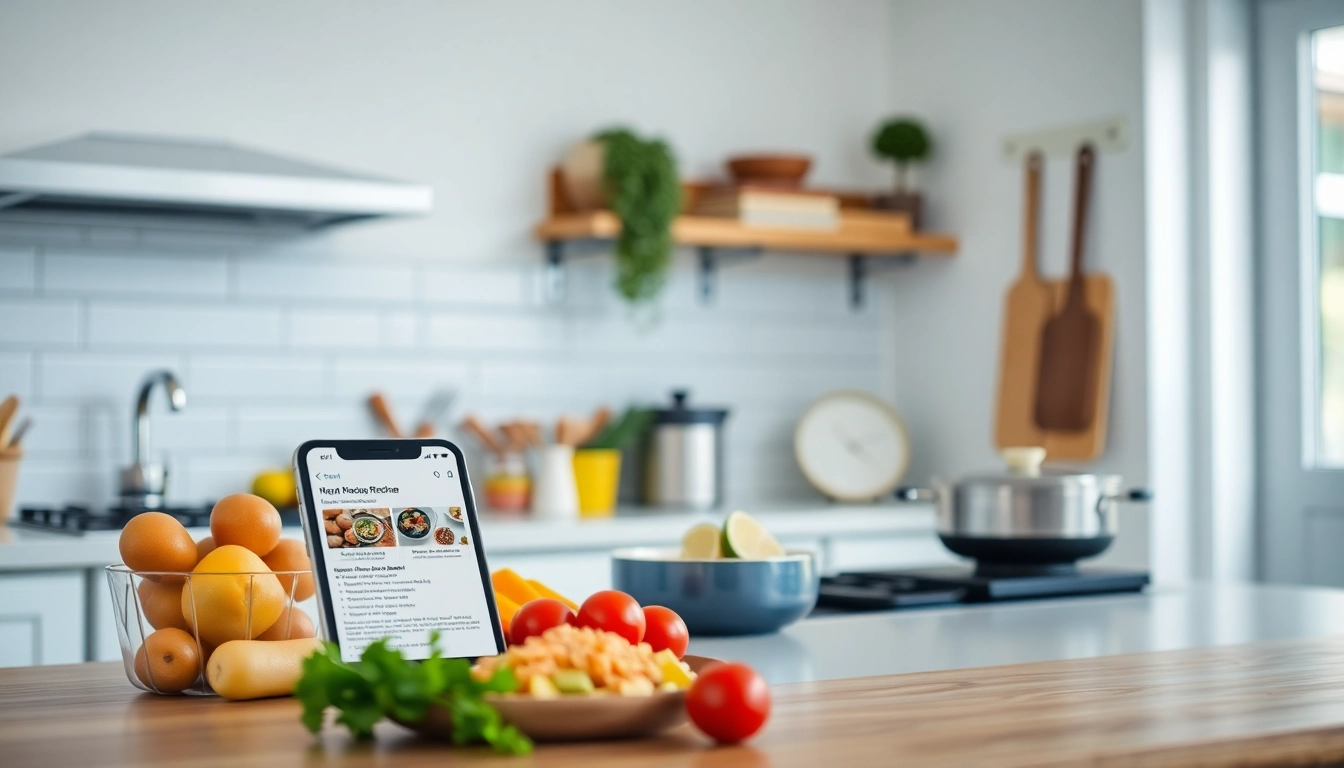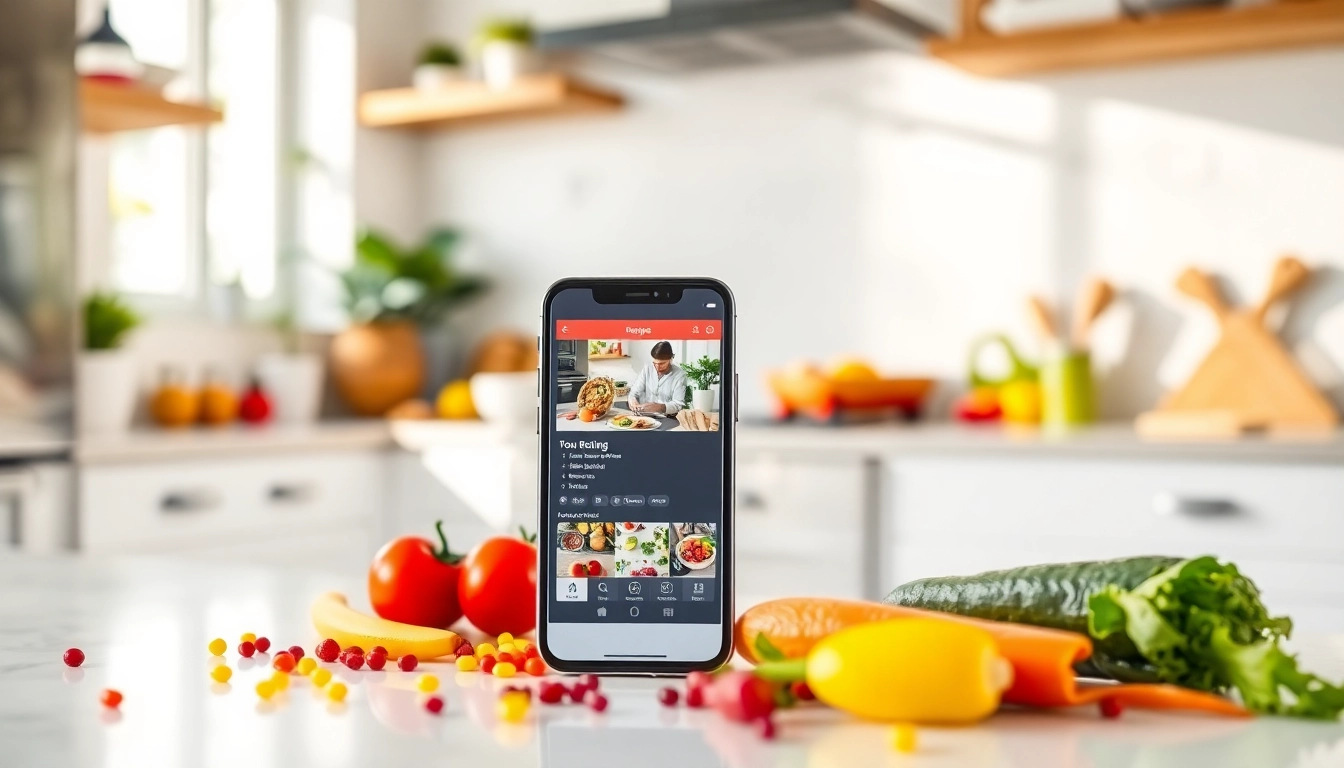Introduction: Embracing Flexibility in Your Digital Recipe Collection
In today’s fast-paced culinary world, chefs and home cooks alike seek a seamless way to save recipes my way. Whether you’re browsing social media, exploring new food blogs, or rediscovering family favorites from handwritten notes, having control over how and where your recipes are stored is paramount. This comprehensive guide explores innovative strategies, tools, and best practices to personalize your digital recipe collection, ensuring that your culinary insights are organized, accessible, and tailored precisely to your needs.
Understanding the Benefits of Saving Recipes Your Way
Personalized Recipe Collection Strategies
Customizing your recipe collection means adapting it to fit your lifestyle, cooking style, and technical comfort level. Traditional digital methods often impose rigid formats or require multiple platforms, leading to disorganization or frustration. By leveraging flexible tools like Cooksync, you develop a personalized system that consolidates recipes from various sources and synchronizes them across your preferred platforms. This approach allows you to create curated collections, tags, and notes that resonate uniquely with your culinary journey.
Advantages Over Traditional Recipe Managers
Conventional recipe management software often stores recipes within isolated apps, limiting your ability to customize or integrate with other tools. In contrast, saving recipes your way provides:
- Data Ownership: Full control over your recipes, avoiding vendor lock-in or proprietary constraints.
- Multi-Source Integration: Easily import recipes from social media, websites, handwritten notes, or cookbooks.
- Platform Flexibility: Sync recipes to the storage or note-taking apps you already use, such as Evernote, Notion, or direct cloud folders.
- Tailored Organization: Implement custom tags, categories, or collections aligned with your cooking habits.
This versatility enhances your ability to discover, organize, and prepare dishes more intuitively, transforming your digital cookbook into a reflection of your culinary identity.
Enhancing Your Cooking Experience
When your recipes are organized your way, cooking becomes more spontaneous and enjoyable. Personalized collections facilitate quicker retrieval, inspire new experimentation, and foster an ongoing culinary dialogue with your collection. Plus, with features like weekly personalized suggestions based on your tasting preferences, your culinary creativity stays ignited. Ultimately, saving recipes your way elevates the entire cooking process—from discovery to execution—making it more meaningful and efficient.
Methods for Saving Recipes The Way You Want
Importing Recipes from Websites and Social Media
The first step in customizing your digital cookbook is effectively importing recipes from a multitude of sources. Today, social media platforms like Instagram, TikTok, and Facebook are treasure troves of culinary content. To harness this content, tools like Cooksync offer browser extensions and dedicated apps that enable direct importing. For example, using a Chrome extension, you can capture a recipe directly from a food blogger’s site or social media post, enabling seamless transfer into your collection.
Additionally, many modern recipe apps support importing via URL, allowing you to quickly add recipes from popular food websites or blogs. This process typically involves copying the link and letting the app fetch the recipe details automatically. Such automation minimizes manual effort and ensures consistency.
Case Study: A home cook saved over 300 recipes from Instagram and various food blogs within weeks by leveraging Cooksync’s social media import features, resulting in a well-organized, easily accessible digital recipe library.
Using Browser Extensions and Apps Effectively
Browser extensions like Cooksync’s Chrome plugin provide an intuitive interface to extract recipe content directly from web pages. These tools typically allow you to choose specific parts of a page—such as ingredients, instructions, or notes—and save them directly into your preferred platform or within your central collection hub.
Mobile apps expand this capability further. With Cooksync’s iOS and Android apps, you can save recipes while on the go, whether by sharing links or manually entering data. Features such as QR code scanning or clipboard monitoring save time and streamline your workflow.
Expert Tip: Use browser extensions to quickly capture recipes during browsing sessions, then organize them into categories like “Weeknight Dinners” or “Dessert Ideas” for immediate retrieval in the kitchen.
Manual Entry and Customization Tips
Despite automation, manual entry remains a vital aspect of recipe preservation, especially for handwritten or uniquely formatted recipes. When manually adding recipes, prioritize clarity and structure—include detailed ingredient lists, step-by-step instructions, cooking times, and notes.
Customization options like tags, images, and personal comments make your collection richer and more aligned with your cooking style. A practical tip is to create a standardized template within your preferred platform, facilitating uniformity and easy scanning later.
Practical Example: A chef maintains a custom digital journal where each recipe includes tags such as “Vegan,” “Quick,” or “Party Favorite,” enabling rapid filtering during meal planning.
Choosing the Right Platforms and Tools
Syncing to Your Favorite Storage Spaces
Once recipes are collected, the key to maintaining an efficient and accessible digital cookbook is robust synchronization. Tools like Cooksync act as a “transport layer,” bridging your collection with platforms like Evernote, Notion, Google Drive, or OneNote. This setup ensures recipes are consistently updated and available where you work or cook.
By connecting Cooksync to your preferred storage, you gain a centralized view of your culinary collection across multiple devices. For instance, you might sync recipes to Evernote for detailed notes and images while storing them in Google Drive folders for automation and backup. This multi-platform flexibility reduces redundancy and enhances accessibility.
Implementation-Step: Register your accounts with Cooksync, authorize access, and define your sync preferences—such as automatic updates or manual sync—tailored to your workflow.
Popular Apps and Platforms for Saving Recipes
Several apps and platforms serve as excellent repositories for your saved recipes. These include:
- Evernote: Ideal for rich notes, images, and tags; perfect for detailed recipe journaling.
- Notion: Customizable databases and pages catering to structured or narrative-style recipes.
- Google Drive/Docs: Easy to organize in folders and share with others.
- OneNote: Flexible for multimedia content and seamless integration with other Office tools.
- Specialized Recipe Apps: Such as RecipeKeeper or MyRecipes, which offer dedicated features but may limit customization.
Choosing the right platform depends on your needs—consider factors like interface, collaboration capabilities, and integration flexibility. Using Cooksync simplifies the process by enabling native synchronization to these platforms without duplicating effort.
Integrating Cooksync Into Your Workflow
The secret to a sustainable digital cookbook is smooth integration. Start by analyzing your current habits: Do you prefer collecting recipes in a note app, bookmarking in a browser, or using dedicated recipe software? Then, connect Cooksync to these platforms, and begin importing recipes automatically or manually, as needed.
Tip: Set up automation rules—such as weekly import batches or real-time sync—to match your usage patterns. Regularly review and reorganize your collection to maintain clarity and motivation.
Optimizing Your Digital Cookbook for Better Cooking
Organizing Recipes for Easy Access
Organization is the backbone of an efficient digital cookbook. Utilize categories, tags, and tags such as “Vegetarian,” “Gluten-Free,” or “30-Minute Meals” to filter recipes quickly. Many tools support search functions, so ensure your keywords and labels are consistent and meaningful.
Advanced tip: Use nested collections or folders for meal types, cuisines, or occasion-based groupings—like “Holiday Baking” or “Weeknight Dinners.” Regular housekeeping, such as archiving unused recipes or updating outdated ones, keeps your collection current and relevant.
Creating Collections and Custom Categories
Collections can be tailored to your cooking goals, such as meal planning, dietary restrictions, or seasonal ingredients. For example, creating a “Vegetarian Favorites” collection consolidates recipes satisfying dietary preferences, simplifying weekly meal prep.
Expert Advice: Incorporate visual cues by adding images or icons to certain collections to improve recognition and motivation. Use tagging systems that align with your cooking schedule, such as “Weekend Specials” or “Quick Lunches.”
Keeping Your Recipes Up-to-Date and Backed Up
Frequent updates ensure your recipes reflect changes like ingredient availability or new techniques. Sync your collection regularly and maintain backups in multiple cloud services to prevent data loss. Automated exports or periodic manual downloads safeguard your culinary knowledge.
Pro Tip: Review and prune your collection quarterly, removing redundant or outdated recipes, and adding new discoveries to keep your digital cookbook fresh and inspiring.
Maximizing Your Recipe Saving Experience
Personalizing Recommendations and Suggestions
Smart recommendation engines analyze your saved recipes and browsing behavior to suggest new dishes aligned with your tastes. Platforms like Cooksync offer weekly personalized suggestions, encouraging culinary adventure and experimentation.
Implementation Tip: Engage with community features, share your collections, and review recipes to train the system for better personalization. Keep your tags and categories consistent to improve recommendation accuracy.
Staying Current with New Features and Support
Technology evolves rapidly; staying informed about updates, new integrations, and platform improvements ensures your collection remains efficient and versatile. Subscribe to newsletters, participate in forums, and provide feedback to developers like Cooksync to influence future enhancements.
Practical Approach: Regularly explore new supported platforms or export options to expand your ecosystem, ensuring your recipes are where you need them when you need them.
Measuring Success and Improving Your System
Assess your recipe organization’s effectiveness by tracking retrieval times, meal preparation flow, and recipe reuse. Solicit feedback from household members or fellow cooks to identify gaps or redundancies. Adjust tags, categories, and sync settings accordingly.
Strategic tip: Keep a journal or digital log of recipe usage to identify favorites and areas for improvement, continually refining your personalized recipe management system.



